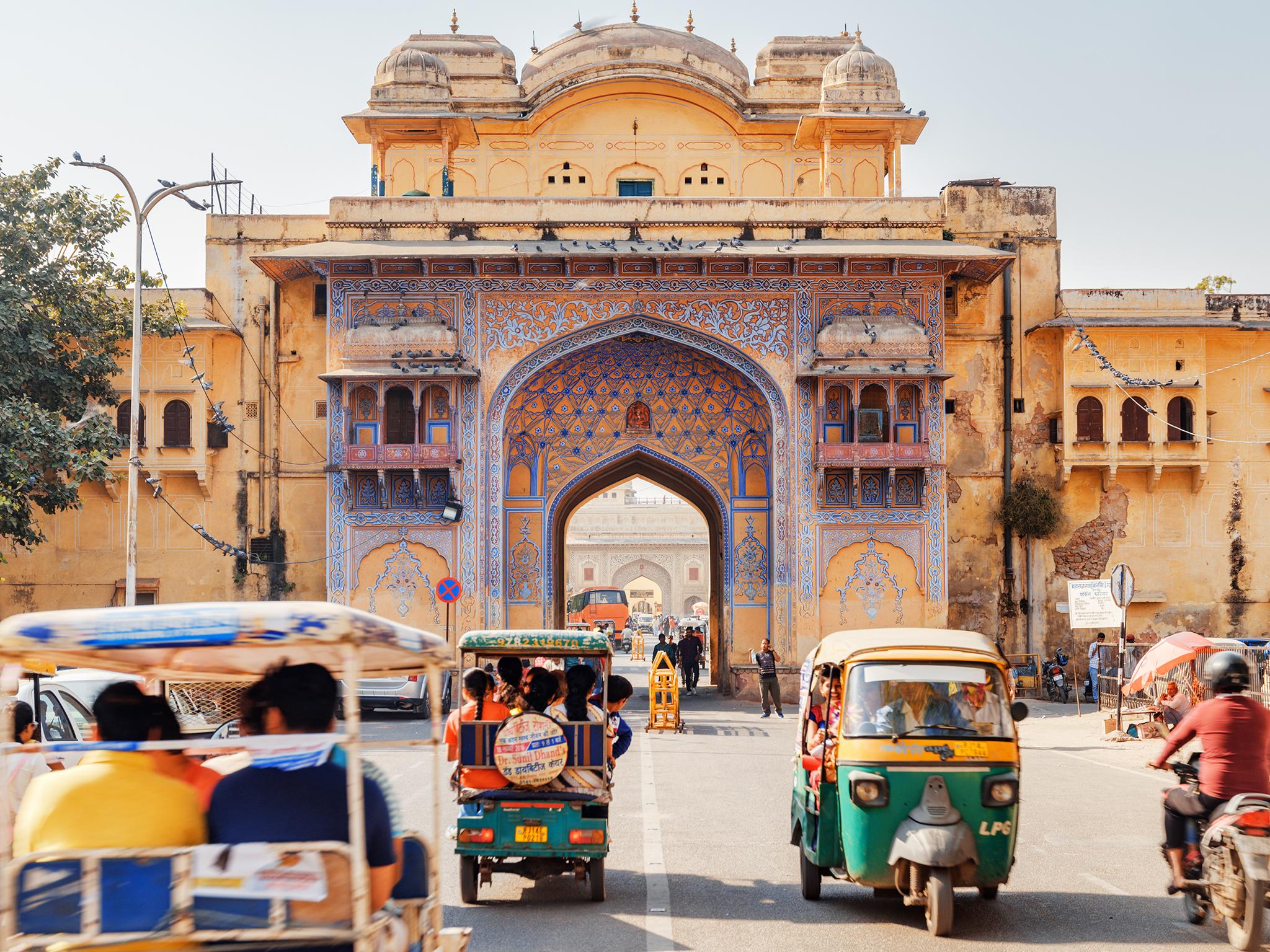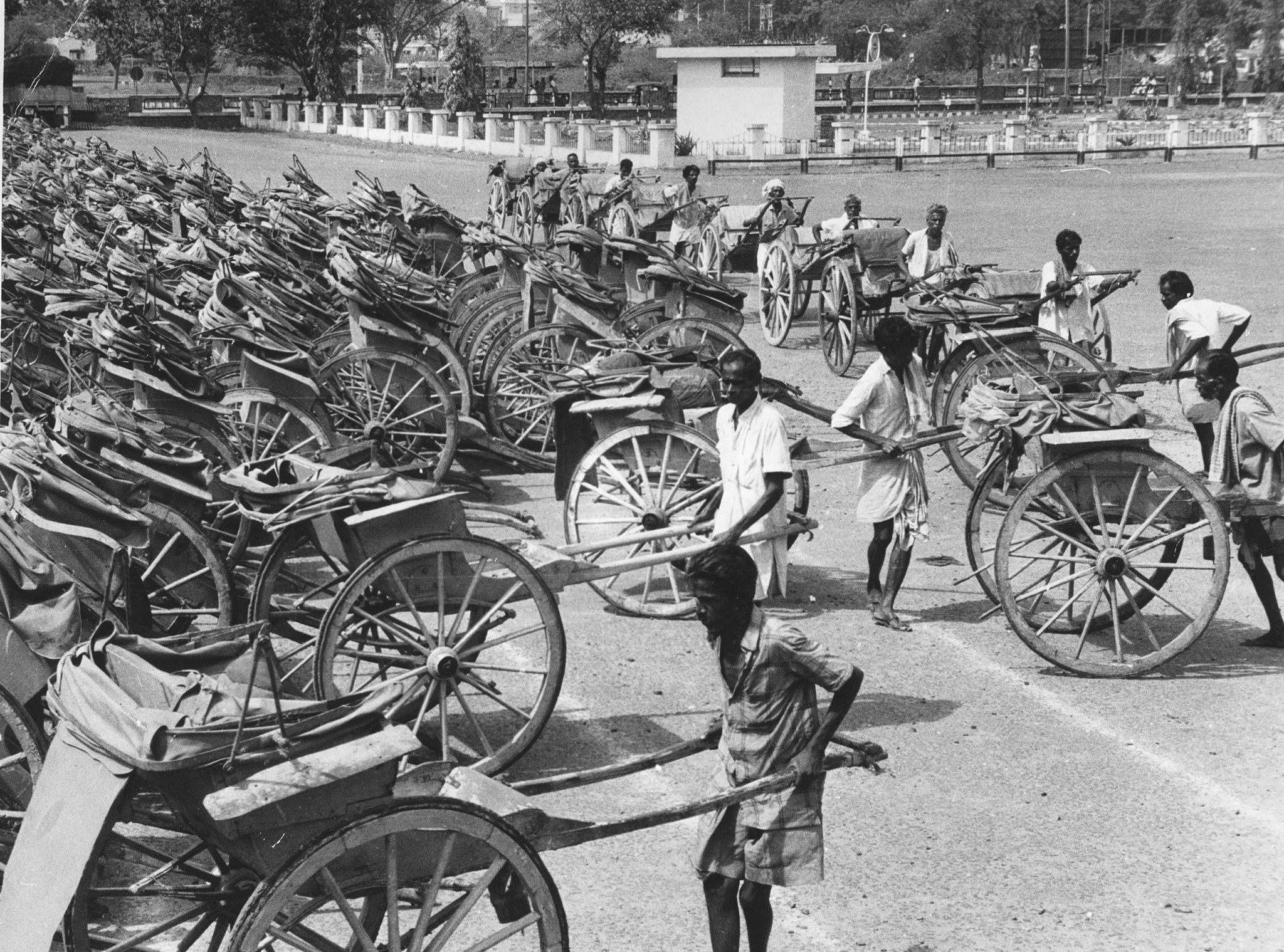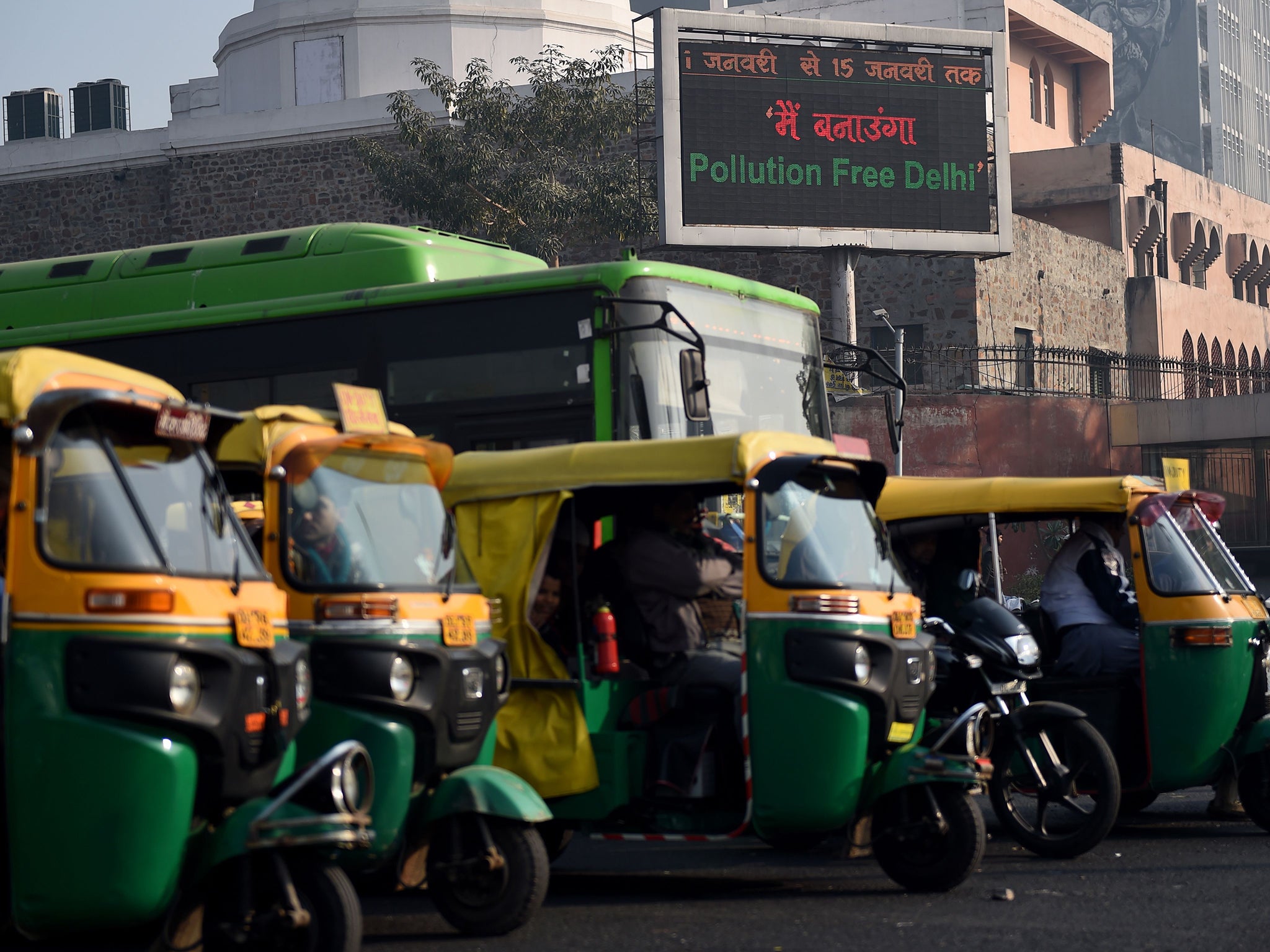The dangers of electric rickshaws on India’s crowded streets
Though they provide greater convenience than traditional pedal bikes, a combination of unlicensed drivers, stolen electricity and overheating batteries makes them a high-risk mode of transport, write Saumya Khandelwal, Vindu Goel and Karan Deep Singh

Your support helps us to tell the story
From reproductive rights to climate change to Big Tech, The Independent is on the ground when the story is developing. Whether it's investigating the financials of Elon Musk's pro-Trump PAC or producing our latest documentary, 'The A Word', which shines a light on the American women fighting for reproductive rights, we know how important it is to parse out the facts from the messaging.
At such a critical moment in US history, we need reporters on the ground. Your donation allows us to keep sending journalists to speak to both sides of the story.
The Independent is trusted by Americans across the entire political spectrum. And unlike many other quality news outlets, we choose not to lock Americans out of our reporting and analysis with paywalls. We believe quality journalism should be available to everyone, paid for by those who can afford it.
Your support makes all the difference.It’s the morning rush hour at Nawada metro station in India’s capital and dozens of electric rickshaws are jockeying to get through the narrow gate into the parking lot. Once inside, each one stops to let its four or five passengers off before squeezing back out to pick up more riders.
More than half of the shared three-wheeled taxis are technically illegal and the drivers typically don’t have licences. Accidents are common. Nearly all of the rickshaws are powered by lead-acid batteries underneath the passenger seats. And the electricity used to recharge them is often stolen.
“It isn’t safe at all,” says Suman Deep Kaur, who works at a credit agency and rides an e-rickshaw twice a day between the station and her home. “But this is the only conveyance that will get me home.”
Welcome to the front line of India’s electric vehicle revolution. It’s messy, improvised and driven by the people. The government and vehicle makers are now trying to gain some control over it.
India’s million e-rickshaws make up the second-largest collection of electric vehicles in the world. Only China’s fleet of several hundred million electric motorcycles and bicycles is bigger.
About 60 million Indians hop on an e-rickshaw every day, analysts estimate. Passengers pay about 10 rupees, or 11 pence, for a ride. In a country with limited shared transit options and a vast population of working poor people, the vehicles provide a vital service as well as a decent living for drivers, who are mostly illiterate.
Whirring through Delhi’s side streets and dirt lanes, the e-rickshaws leave passengers with dust-filled lungs and shaken bones. Drivers often go against traffic, playing chicken with oncoming buses and trucks. The vehicles’ open sides, handy for hopping on and off, require that riders hang on or risk falling out. The batteries sometimes overheat, putting people in a literal hot seat.
Yet to millions of Indians, it’s all worth it.
In the country’s northern cities, where e-rickshaws are concentrated, the vehicles are supplanting auto-rickshaws, the better-known three-wheelers that serve as neighbourhood taxis, seat up to three people and run on diesel, gasoline or natural gas.
Although auto-rickshaws are safer and faster, a ride in one costs three to 10 times more than a ride in an e-rickshaw, which is less expensive because of the vehicles’ cheaper energy supply and ability to cram in four or more paying passengers.
For many drivers, going electric is an upgrade from the old-fashioned cycle rickshaws they once pedalled.
Vinod Jha, 42, a cycle rickshaw driver who changed to an electric model two years ago, says he gets more business now. Passengers overwhelmingly prefer e-rickshaws to human-powered ones.
But there are downsides. “I felt healthier then,” he says. “Now I’m lazy.”
Sanjeet Kumar drives an e-rickshaw during rush hours as a sideline to his main job: selling ayurvedic medicine. A father of three, Kumar says he needs the income from two jobs to pay for arthritis treatments for his wife.

“I have struggled a lot,” he says while speaking in the one-room flat he shares with his eldest son. “But now she can use her hands. Now she can walk.”
India’s embrace of electric vehicles has been disorganised, like so much else in the country. The first e-rickshaws appeared about a decade ago when small manufacturers imported ready-to-assemble kits from China, where the vehicles were used mainly to haul cargo.
The government ignored the rise of e-rickshaws until 2014, when a three-year-old child was knocked into a pot of hot oil by a driver who hit the boy’s mother. The Delhi High Court ruled that the vehicles were illegal and banned them.
One e-rickshaw has at least four to six votes
The national parliament stepped in and legalised e-rickshaws in 2015, but most owners do not get the required licences for them. Sunny Garg, who runs G&G Automotive, a New Delhi manufacturer of higher-end e-rickshaws that cost about $2,000 (£1,600) apiece, says that elected officials have realised drivers are important constituents.
“One e-rickshaw has at least four to six votes,” he says, referring to the members of each driver’s family.
E-rickshaws reduce air pollution in places like New Delhi, one of the world’s smoggiest cities. Officials there now offer a subsidy of 30,000 rupees to drivers who buy new ones.
As the vehicles’ popularity has grown, Indian companies have tweaked the original Chinese designs. New brands like Saarthi, one of the biggest manufacturers of e-rickshaws in the Delhi area, have emerged, as has an ecosystem of parts suppliers and neighbourhood parking lots where drivers can store and recharge their vehicles overnight.
The central government is now trying to force motorcycle and auto-rickshaw makers to go all-electric, too. It just cut taxes on electric vehicles and has proposed subsidies for batteries and charging stations. Along with those carrots is a stick: a requirement that all new three-wheeled vehicles be electric by 2023 and that two-wheeled ones meet that goal by 2025.

“This is good for the Earth,” says Rajiv Kumar, vice chairman of Niti Aayog, the agency spearheading the plan.
Safety remains a concern. E-rickshaws, with their slow speed and rickety design, are prone to accidents. Drivers are supposed to avoid major roads, but many do not. Utility companies complain about charging lots stealing power using illegal connections.
India’s hot climate also punishes electric batteries. They lose their charge more quickly here than in cooler countries, and they can overheat and shut down.
Big companies are starting to see potential in solving the problems.
Ola, an Uber competitor in India, is experimenting with e-rickshaws that can exchange lithium ion batteries quickly so there is no downtime for drivers. Ola has built a battery-swapping station just outside of Delhi and has raised $250m from Japanese conglomerate SoftBank to invest in electric vehicle technology.
“It can’t be chaos forever,” says Anand Shah, head of Ola Electric Mobility. “It’s got to improve.”
Mahindra & Mahindra, a top producer of commercial vehicles, has teamed up with SmartE, a startup, to build a market for premium e-rickshaws that run on lithium-ion batteries.
SmartE, whose roughly 1,000 e-rickshaws make up the largest fleet of such vehicles, has a contract with Delhi’s metro system to place its vehicles in prime locations. It also has ambitions to standardise the entire e-rickshaw ecosystem.
The startup rents lithium-ion e-rickshaws to drivers, charging and maintaining them at its own lots. Drivers must follow routes set by a computer that assesses demand. SmartE even encourages its drivers to wear company T-shirts for a more professional look.
It seems to be working. In the morning at a station in the Delhi suburb of Dwarka, nearly every passenger getting off a train heads towards one of SmartE’s bright green vehicles instead of seeking out other e-rickshaws.
Goldie Srivastava, SmartE’s chief executive, says it makes sense that three-wheeled vehicles are leading India’s electric revolution.
“Hopping into a three-wheeler is a habit for a large number of lower and middle-income Indians,” he says. “It’s electric, but it’s not like it’s a dramatically new form factor for India.”
© New York Times
Join our commenting forum
Join thought-provoking conversations, follow other Independent readers and see their replies
Comments